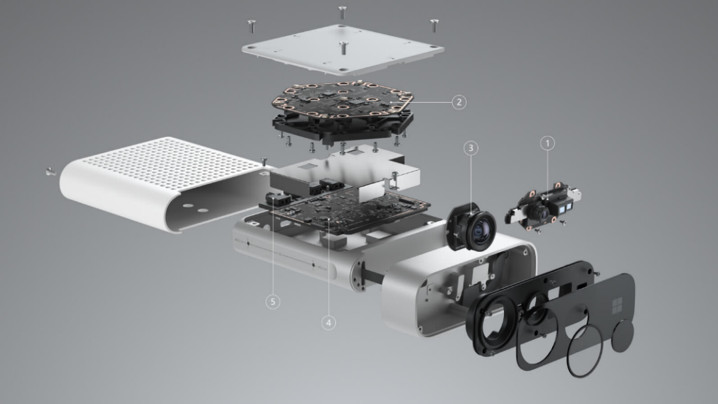
Earlier this year, Microsoft and Open Robotics' Robot Operating System (ROS) was made generally available. The open source robotics framework allows for the development of robotics software, essentially enabling robots to benefit from the Windows ecosystem. Special access to features like Windows Machine Learning and Vision Skills are also provided through the operating system.
Now, Microsoft has announced a set of expanded capabilities and improved support for ROS at the ROSCON event being held in Macau. Notable additions include further support for ROS and ROS2, a new Visual Studio Code extension, and the Azure VM ROS template to help perform cloud-based testing.
To expand on each of these, starting with the new VS Code extension, it was first previewed in July in the form of a release implemented by the community. Its functionality has since been improved, and it offers support for the following processes:
- Automatic environment configuration for ROS development
- Starting, stopping and monitoring of ROS runtime status
- Automatic discovery of build tasks
- One-click ROS package creation
- Shortcuts for rosrun and roslaunch
- Linux ROS development

Debugging for ROS nodes that leverage C++ and Python extensions and are launched at ROS startup can also be performed now. As shown in the image above, robot models can now be represented through Unified Robot Description Format (URDF), allowing developers to visualize models and edit them with ease.
Moving on, the ROS on Windows VM template can be used to create Windows VMs and install the lates ROS releases directly into the VM. This makes it much simpler to perform cloud-based testing and comprehend the deployment flow. Simulation scenarios can also be utilized repeatedly throughout the development phase.
Lastly, support for ROS and ROS2 has been substantially increased through the introduction of the Microsoft-supported ROS nodes including the Windows ML Tracking ROS Node, the Azure IoT Hub ROS Node, and the Azure Kinect ROS Driver.

The Kinect Development Kit is Microsoft's latest Kinect sensor, sporting a 4K camera, a 7-element microphone array, and a hardware-synchronized accelerometer & gyroscope (IMU). The Azure Kinect ROS Node emits a PointCloud2 stream containing depth and color information, raw image data, and more. The driver can be ordered here, and you can learn more about how to then utilize the node here. The Windows Machine Learning ROS node, meanwhile, helps hardware accelerate the inferencing of created Machine Learning models. And finally, the Azure IoT Hub ROS Node allows for the streaming of ROS messages through the Azure IoT Hub.
To learn more about these new technologies, you can visit Microsoft's booth at ROSCON in Macau, with the event carrying through October 31 - November. For those who are interested in jumping right into the Robot Operating System, they can do so here.

















2 Comments - Add comment